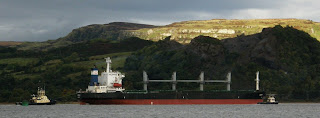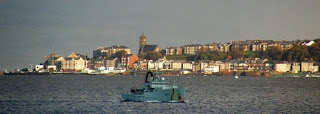
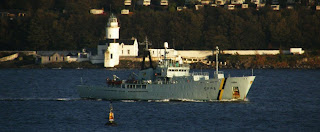


Norna passing the Gantocks.
The Gantocks is a small cluster of rocks which lies at the mouth of West Bay, south of Dunoon in the Firth of Clyde, and is marked by an illuminated beacon which was built c. 1886. The beacon is partnered by the Cloch Lighthouse located on Cloch Point to the east, and the two were deliberately designed to have significantly different characters to avoid confusion. The character of a lighthouse or beacon describes the colour of the light, and the timing of its light and dark periods.
The Gantocks beacon tower has a height of 44 feet, with the focal plane of the light at 39 feet. The light is red, and flashes once every 6 seconds, with a range 6 nautical miles.
Courtesey of secretscotland.org.uk
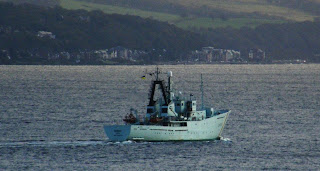





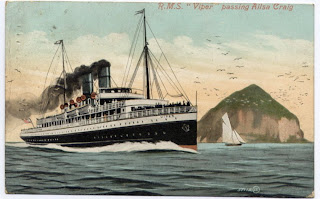



 Norna passing the Gantocks.
Norna passing the Gantocks.



 Deo Volentie making her way down river after delivering more wind mill parts to Sheildhall in Glasgow.
Deo Volentie making her way down river after delivering more wind mill parts to Sheildhall in Glasgow.






